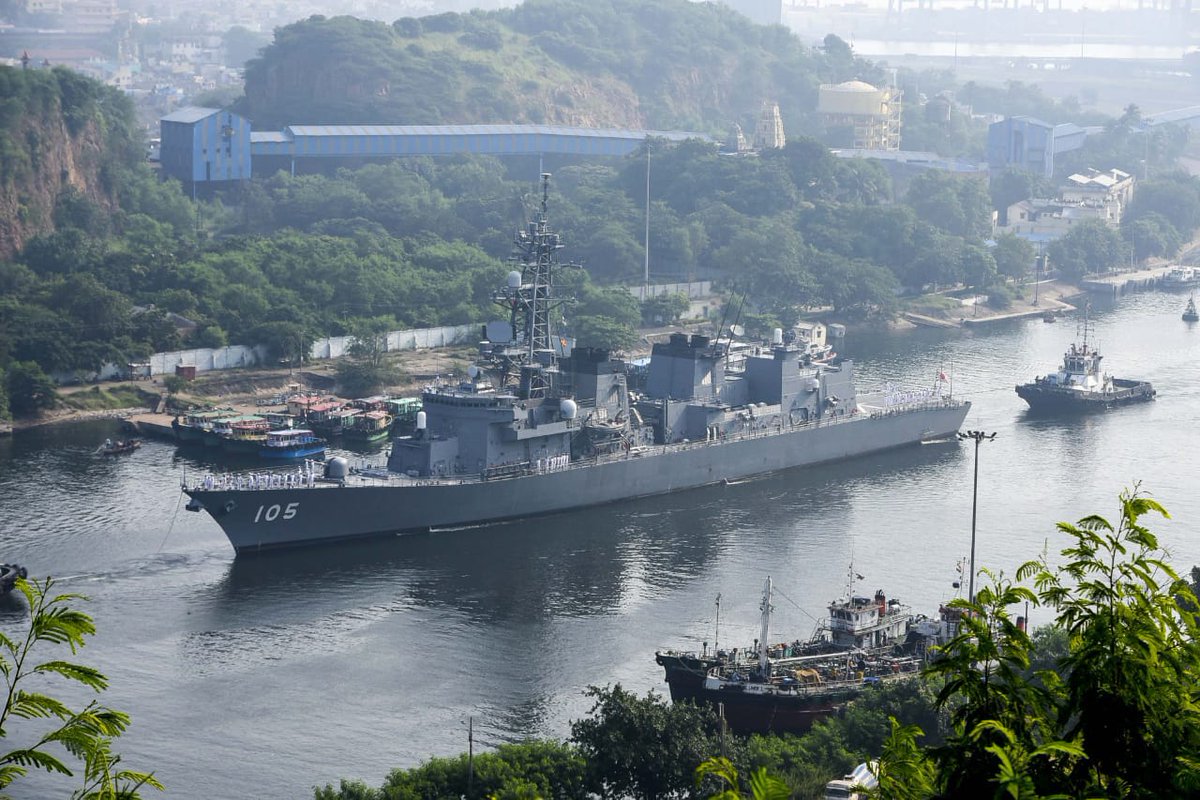Japan's Kaga helicopter carrier wages daily war on dirt and grime to keep clean
Japan's Kaga helicopter carrier is not the biggest, fastest or most powerful warship to sail the seas, but its 500 crew wage a daily war on dirt and grime to keep it the cleanest.

- Country:
- Japan
Japan's Kaga helicopter carrier is not the biggest, fastest or most powerful warship to sail the seas, but it's 500 crew wage a daily war on dirt and grime to keep it the cleanest.
At sunset each evening on a nine-day goodwill voyage from Indonesia to Sri Lanka, Reuters journalists watched the crew arm themselves with mops, brushes and dusters to clean the 248 meters long (813 ft) ship.
"I believe that Kaga is the cleanest ship anywhere," said Hayato Nishida, a 36-year-old chief petty officer responsible for keeping the vessel spick and span.
"We do it at a set time and everyone splits up the tasks," he said in a storeroom that doubles as an office for Nishida and two colleagues who oversee a 30-minute cleaning frenzy every day.
Sailors scrub toilets, mop and buff floors, and remove dust from the web of overhead pipes, wires and vents along the ceilings of one of the newest ships in Japan's Maritime Self Defence Force (MSDF).
Brass door fittings are smeared in petroleum jelly to fend off corrosion. Carpeted meeting rooms are vacuumed and then cleaned with lint rollers to pick up stray dust. Ceilings are the biggest challenge because they are the hardest to reach.
"Keeping the ship clean means we can use it for a long time," Rear Admiral Tatsuya Fukuda, the task force commander, said in his spotless cabin. "It also teaches sailors to love their ship and to perform to the best of their ability."
The group effort is an extension of habits the crew learned at school, Nishida said. Japanese pupils are expected to keep their classrooms tidy and share the work of cleaning after lessons end, to encourage teamwork.
"We don't have any dedicated cleaning crews. Everyone joins in," said Nishida, who walks the ship to inspect their work.
BUFFED TO A SHINE
The Kaga, Japan's second big helicopter carrier, entered service in 2017, giving its military greater ability to deploy beyond its shores.
The goodwill tour to Sri Lanka, an island nation strategically located near major Indian Ocean shipping lanes, is part of Japan's effort to push back against China's growing influence in Asia.
The 20,000-tonne ship still smells of fresh paint and its floors are buffed to a shine. Dust is hard to find.
Life on board revolves around meal times, starting with breakfast at 6:30 a.m. Sailors line up to wash their hands before entering the mess, the only place, apart from living quarters, where they are allowed to eat or drink.
After their shift end, sailors can soak in deep stainless steel seawater baths that follow Japan's traditional bathing culture, or take a clean water shower.
Crewmembers can stay in shape jogging on the Kaga's sprawling flight deck or work out in a gym. Others follow traditional methods of purifying minds and bodies, such as shodo calligraphy, Iaido sword drawing or taiko drumming.
"If the ship isn't clean, people could get sick, and it is not comfortable living in a place that is dirty," Kanayuki Morishita, a 21-year-old trainee, said as he scrubbed a urinal with a toilet brush.
The exterior gets a cleaning too, including the anchor and its chain after they are pulled up from the sea floor.
The flight deck, where the Kaga's sub-hunting Seahawk helicopters take off and land, can get a coating of salt from the spray of seawater.
Before arriving in port, the flight deck and bridge are hosed down with fresh water from the carrier's tanks to smarten up their appearance before visitors come aboard.
Taking out the garbage was the crew's final task after the ship docked in Colombo harbour.
Each sailor queued to pick up a bag of rubbish - separated into burnable and non-burnable bags – to be carried to waiting garbage trucks before starting shore leave.
"Even among Japanese Maritime Self Defence Force vessels, we are the cleanest," Rear Admiral Fukuda said.
(With inputs from agencies.)










